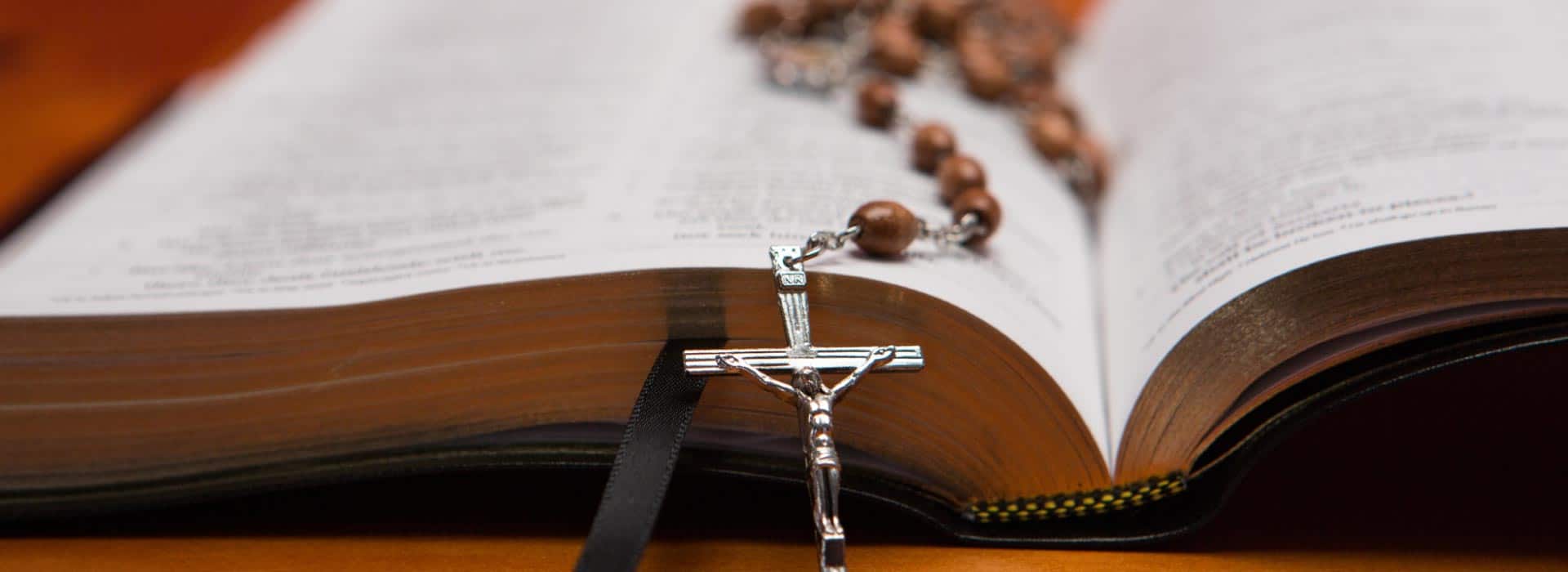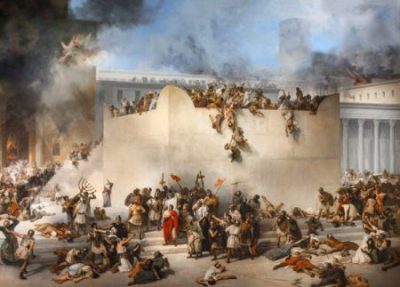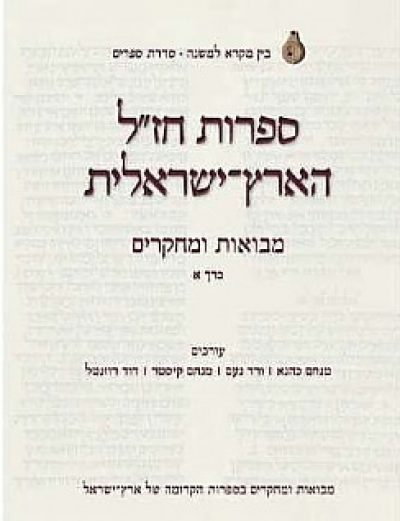History
While Jerusalem is not mentioned explicitly in the Torah it does appear often (over 600 times) in the Tanakh. Jewish tradition regards Mt. Moriah (the Temple Mount in Jerusalem) as the place of Abraham’s near-sacrifice of Isaac (known as the aqeda) and sees the Jewish connection to Jerusalem as dating from this time.
The name Jerusalem—which has several interpretations—is comprised of two terms: Yeru and Shalem — each connected to Abraham. Yeru refers to God’s presence and is derived from the word Yireh in the story of God’s appearance to Abraham at the time of the `aqedah (binding of Isaac, Gen. 22:14). Shalem is the name of the city in which Abraham meets the king Melkhizedeq and is traditionally identified with Jerusalem. Shalem is connected to Shalom and Jerusalem is often referred to—at least optimistically—as the “city of peace”.
Jerusalem has 70 names in the Jewish tradition, some of which are: Zion, City of David, Ariel and Moriah.
Temple
Jerusalem is understood to be the place to which the Torah refers with the phrase “the place which God will choose.” According to Biblical history, King David made it the capital, uniting the 12 tribes of Israel. Solomon followed by constructing the Temple and Jerusalem became the sole center of Jewish ritual since this time. During Temple times Jerusalem was the destination for Biblically commanded pilgrimage three times a year: at the festivals of Passover, Shavuot and Sukkot. Jews paid a half-sheqel tax to maintain the Temple and were required to donate tithes of their produce to support the Temple priests.
For nearly 1,000 years a Jewish Temple stood on what is known as the Temple Mount:
- c. 960 – Solomon built the first Temple
- 586 – First Temple was destroyed by Babylonians
- c. 516 – Second Temple was built
- Second century B.C.E. – The Temple was defiled by the Greeks and rededicated by the Hasmoneans (which is celebrated at Hannukah)
- 70 C.E. – The second Temple was destroyed by the Romans.
The ninth day of the Hebrew month of Av (July-August) commemorates the destruction of both Temples and is a day of fasting and lamentations.

Western Wall
King Herod, Jerusalem’s last great builder in antiquity, expanded the Temple Mount to accommodate more and larger structures than had ever stood there before. Herod’s Temple and the nearby basilica stood on a huge rectangular platform. (This is the Temple that Jesus visited.) Even after the destruction of the Second Temple the platform remained. (This is the haram a-sherif on which the Dome of the Rock and the El-Aqsa Mosque stand today.) Closest to the Temple’s holy-of-holies is the western wall of this complex which is known as the kotel ha-maaravi (this must not be translated “al-mabka”).
The kotel has become an important Jewish symbol and pictures of it are venerated by Jews around the world. Jews have prayed—and dreamed of praying—at the kotel for generations. The custom of weeping at the kotel for the destruction of Jerusalem and the Temple led the the kotel’s other name the “wailing wall” “al-mabka.” Those unable to make a pilgrimage to Jerusalem and pray at the kotel have sent their prayers in writing which is likely the source of the custom to insert p’takim or kvitlakh (notes containing prayers) into the cracks of the Western Wall. Pope John Paul II left a prayer for Christian-Jewish reconciliation in the Kotel during his visit in 2,000.
Jewish Life
Jerusalem is seen as the center—the navel—of the world and even after the destruction of the Temple (70 C.E.) Jerusalem remained the focus of Jewish prayer. Jewish law requires one to turn toward the Temple Mount in prayer and synagogues around the world are built to face Jerusalem. Remembering Jerusalem is a central idea in Judaism. It is based on Psalm 137:
If I forget you, Jerusalem, let my right hand forget its skill.
Let my tongue stick to the roof of my mouth if I don’t remember you;
if I don’t prefer Jerusalem above my chief joy. (vv. 5-6)
The memory of Jerusalem is focused on—but not limited to—the destroyed Temple. According to a practice mentioned in the Talmud, it is customary to leave a portion of one’s home unpainted or unplastered in memory of the destruction. Popular culture connects the breaking of a glass at a wedding (“my chief joy”) with the destruction of Jerusalem.
Jewish dreams for restoration have been expressed in terms of a rebuilt Jerusalem. (Traditionally, and for some today, this includes a Third Temple and the resumption of sacrifices.) Hopes for a rebuilt Jerusalem are a central theme of Jewish prayer and are repeated several times each day. An example of one such prayer is:
May You return to Jerusalem Your city in compassion. … May You rebuild it soon in our days … Blessed are You God, the Builder of Jerusalem.
(From the daily `amida)
The desire to be in Jerusalem is also expressed in Jewish burial customs. For nearly 2,000 years Jews outside Jerusalem have arranged to be buried in Jerusalem (usually on the Mount of Olives). On two occasions, Passover and Yom Kippur, major Jewish rituals conclude with a wish about Jerusalem. Jews outside Jerusalem say “Next year in Jerusalem” and Jews in Jerusalem say “Next year in rebuilt Jerusalem.”
Today Jerusalem is as much a national symbol as a religious one. Even without the Temple, the concept of pilgrimage to Jerusalem exists amongst both Israeli and Diaspora Jews. Many Jews from around Israel and the Diaspora come to Jerusalem to celebrate their child’s Bar Mitzvah (for a daughter: Bat Mitzvah), often at the Western Wall. The army and the state conduct regular ceremonies in the Western Wall plaza including the opening of Israel’s Memorial Day for fallen soldiers.
The eschatological concept of a perfect “heavenly Jerusalem” envisages a city for which God cares and has prepared for the future. “Heavenly Jerusalem” corresponds to the imperfect “earthly Jerusalem” which is popularly understood to be a work-in-progress striving to reach the heavenly ideal.
There has nearly always been a small and nearly continuous Jewish presence in Jerusalem since the destruction in 70 C.E.






